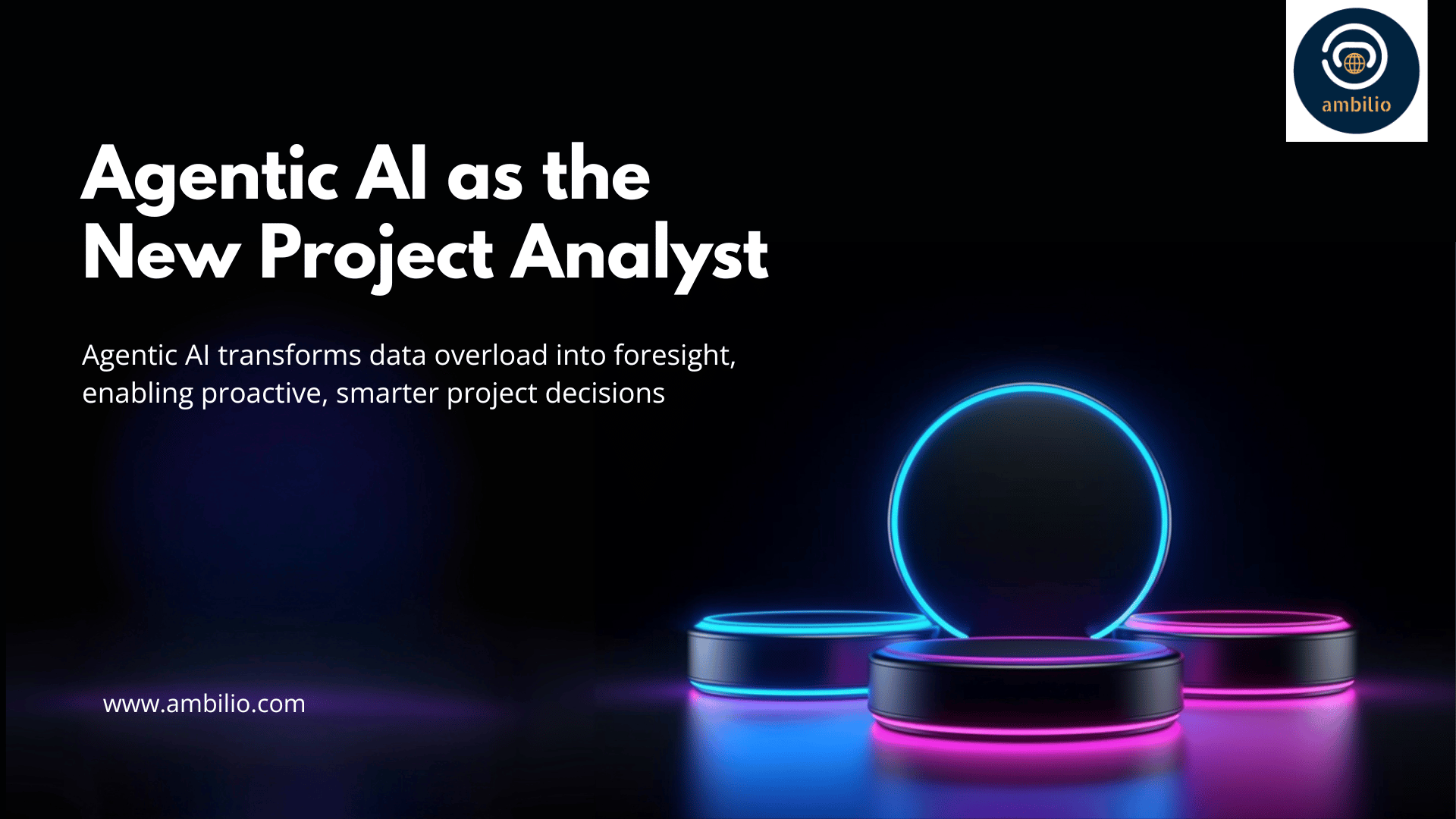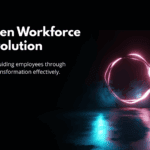In today’s fast-paced business environment, projects are becoming more complex, data is multiplying at an unprecedented rate, and decision-making windows are shrinking. Project managers and analysts are often buried under layers of reports, dashboards, and performance metrics, struggling to identify what truly matters. The challenge is not the lack of information but the difficulty of converting that information into timely, actionable insights. This is where agentic AI comes into play. By acting as a new-age project analyst, agentic AI systems can continuously process vast amounts of structured and unstructured project data, anticipate risks, simulate scenarios, and provide foresight instead of hindsight. This article explores how agentic AI can transform project analysis, improve outcomes, and reshape the role of managers in the modern workplace.
The Overload of Data in Project Management
Organizations today use multiple tools for managing projects—Jira, Asana, MS Project, Slack, ERP systems, HR dashboards, and finance trackers, to name just a few. Each of these tools generates valuable data, but the sheer volume creates a problem. Managers are forced to spend hours consolidating and interpreting this information before making even a basic decision.
Instead of empowering project leaders, data overload often slows them down. Reports are either too generic to offer meaningful insights or so detailed that identifying patterns becomes overwhelming. This lag between data availability and actionable decision-making is one of the most pressing issues in project management today.
Agentic AI steps in here, functioning not merely as another tool but as a continuous analyst that connects to every relevant data source, learns patterns, and proactively surfaces insights. It transforms information from a burden into a genuine advantage.
Continuous Data Ingestion and Analysis
A key strength of agentic AI lies in its ability to connect seamlessly across multiple systems and ingest both structured and unstructured data. For example, structured data such as project timelines, resource availability, or budget utilization can be combined with unstructured inputs like email threads, meeting transcripts, and chat conversations.
By continuously parsing this data, the AI agent ensures that no insight is missed. It can detect subtle warning signs like recurring complaints in team communications or a gradual decline in resource utilization efficiency. What would normally require multiple reports and human interpretation is processed in real time by the AI.
This constant stream of data ingestion means that managers always have the most up-to-date picture of the project environment, without the need to spend endless hours on manual analysis.
Moving From Descriptive to Predictive Analysis
Traditional project reporting is largely descriptive—it tells teams what has already happened. By the time problems surface in reports, they may already have escalated into risks. Agentic AI shifts this approach by moving into predictive and even prescriptive analysis.
For instance, instead of only highlighting that a milestone was missed, an AI agent can forecast the downstream effects of that delay, such as how it will impact the overall project timeline or associated costs. It can identify patterns that indicate a resource bottleneck before it becomes visible to managers.
More importantly, agentic AI does not stop at predictions. It also provides recommendations on corrective actions. For example, it might suggest reallocating certain resources, adjusting workloads, or revising deadlines to keep the project on track. This proactive dimension is what truly sets it apart from conventional project analysis.
Scenario Simulation for Better Decision-Making
Another powerful feature is the ability of agentic AI systems to run simulations of different scenarios. This gives managers the ability to test decisions before implementing them in real life.
Consider the case where a critical resource might become unavailable for a month. Instead of reacting in panic when it happens, managers can ask the AI to simulate the outcome of such a situation. The system can project how timelines, costs, and deliverables would be affected and propose alternative strategies to minimize disruption.
Similarly, agents can simulate the effect of budget cuts, sudden changes in scope, or unexpected client demands. By running multiple “what-if” scenarios, agentic AI enables managers to anticipate challenges and select the best path forward, backed by data-driven foresight.
From Raw Reports to Contextual Alerts
One of the frustrations in project management is the endless cycle of status updates, weekly reports, and dashboards that often obscure the real issues. Managers frequently find themselves reviewing large volumes of data only to discover that critical problems were hidden in plain sight.
Agentic AI improves this process by delivering contextual alerts rather than raw reports. Instead of a 20-page report, the AI can generate a concise, actionable message such as: “Task X is three days behind schedule. Based on historical data, this delay is likely to push Milestone Y by two weeks unless additional resources are allocated.”
This shift from passive reporting to active guidance saves managers time and ensures that attention is directed where it is most urgently needed.
Redefining the Role of Human Managers
A common concern with the rise of automation is whether AI will replace human roles. In the context of project management, the opposite is true. Agentic AI as the new project analyst complements human managers rather than replacing them.
By handling the heavy lifting of data collection, interpretation, and foresight, AI frees managers to focus on areas where human judgment and leadership are irreplaceable. These include motivating teams, negotiating stakeholder expectations, navigating organizational politics, and fostering innovation.
The role of the manager evolves from being a data interpreter to becoming a true strategist and leader, making higher-quality decisions with confidence.
Trust, Accountability, and Transparency
While the potential of agentic AI is immense, organizations must also address the issues of trust and accountability. Decisions informed by AI agents should always be explainable. Managers need to understand not only what the recommendation is but also how the AI arrived at it.
Transparent reporting, such as showing the data sources, historical trends, and predictive models used, helps build confidence in the system. At the same time, final accountability must remain with human managers, ensuring that AI serves as a tool for empowerment rather than a replacement for responsibility.
This balance of autonomy and oversight will be critical as companies adopt agentic AI systems in sensitive project environments.
Building the Foundation for Adoption
To implement agentic AI effectively, organizations need to prepare their infrastructure and teams. This includes:
- Data readiness: Ensuring that project, financial, HR, and communication data is accessible and integrated.
- Tool integration: Allowing AI agents to connect seamlessly with existing project management systems.
- Skill development: Training managers and analysts to work alongside AI tools and interpret their outputs.
- Governance models: Establishing rules around when to trust AI recommendations and when to escalate decisions to leadership.
Adoption should be gradual, starting with pilot projects where the AI can demonstrate value before being scaled across the enterprise.
The Future of Project Analysis with Agentic AI
Agentic AI as the new project analyst is more than a technological innovation; it represents a paradigm shift in how organizations approach projects. It redefines the relationship between data, decision-making, and leadership. Instead of drowning in reports, managers gain foresight. Instead of reacting to risks, they prevent them. Instead of spending hours analyzing data, they spend that time guiding their teams.
The future of project management will not be about humans versus AI but about humans working with AI agents as partners. Together, they can handle the complexity of modern projects more effectively than either could alone.
Final Words
The project landscape of today demands speed, adaptability, and precision. Data is abundant, but actionable foresight is scarce. By serving as a tireless analyst, agentic AI systems fill this gap, providing continuous insights, predictive analysis, and actionable recommendations. They empower managers to shift their focus from firefighting to strategic leadership.
Agentic AI as the new project analyst is not a futuristic concept but an emerging reality. Organizations that embrace it will gain a competitive advantage by making smarter, faster, and more reliable project decisions. Those that hesitate may find themselves overwhelmed by the very data they sought to use. The choice is clear: project management must evolve, and agentic AI is the catalyst driving this transformation.


